(Listen to the radio version here.)
In November 2021, a Rufous Hummingbird started visiting my yard. She stuck around until December 4. (You can read all about her here.)
I spent an inordinate amount of time at my home-office window photographing her, and between her visits, I started paying closer attention to the Pileated Woodpeckers in my yard.
Pileated Woodpecker faces are so arresting with their bold red crest and golden eyes that most of us don’t spend a lot of time looking at the rest of them, especially their legs. Indeed, from most angles we can’t see them, and even when the angle is right to see one or both feet, the legs are often obscured by belly feathers. But thanks to the hummingbird, I was taking bazillions of photos, and at some point I noticed that one Pileated was wearing an aluminum band on his right leg.
It was tricky enough getting pictures showing the band at all, and at most, any photo showed just three or four digits. These bands have a conspicuous seam, so soon I was certain of the first and last digits, but it took over a week of paying close attention and photographing him over and over to get enough clear photos of different views of the band to tease out the full 9-digit number: #115423658.
Pileated Woodpeckers are not particularly migratory, so I knew this one must have been banded somewhere in or near Duluth. I emailed Hawk Ridge Bird Observatory’s banding director, Frank Nicoletti, asking if he knew about this bird. Sure enough, he’d banded him at Hawk Ridge, about 0.75 miles from my house, on November 22, 2020.
That means this bird hatched out just a few months before my grandson Walter was born, and may have been visiting my feeder for a year or more before I finally noticed that leg band!
After my hummingbird left, I was still in the habit of constantly glancing out the window, now mostly searching for this one particular bird, who I called BB for Banded Boy. I spend most of my work weeks babysitting Walter, but Russ started paying attention when I was gone, and we both got good at keeping our eyes peeled for his right leg. He often clings to the feeder with the right leg higher than the left, making the band easier to see from the house.
He came almost every day that entire winter. Last April, when he was almost two years old, he started coming with a female. I got a photo of the two of them in the same feeder last April 23.
That was the last I saw of him for almost four months. He and his mate must have nested in another part of the neighborhood, because when he started coming again in September, he looked bedraggled, the way many parent birds do after rearing young to independence.
He didn’t show up as often this winter as he had last year, but now he’s coming regularly again, usually accompanied by a female. I have no way of knowing whether she’s the same one from day to day, much less whether she’s the one he was with last spring. For a while, I was calling her “Mrs. B”, but then realized that was presumptuous—even if I knew this was always the same female, how could I possibly know how committed she is to BB?
Whoever she is, when they arrive together in the morning, BB goes to the feeder first. Sometimes she waits for him to leave the feeders before she comes in, but early yesterday morning I got a few photos of them eating side by side in two adjacent feeders. Unfortunately, the light was a bit too low for me to get both in perfect focus at the same time.
I did better with a 1-minute video of them feeding together that I put on YouTube. (Substack doesn’t allow me to embed videos.)
This morning, I was eating breakfast in our dining room, facing away from the window, when a shadow on the wall alerted me that a bird was out there. Sure enough, it was BB, the female not far behind. Something about that reminded me that although I’d talked to Frank about BB, I’d never reported him to the Bird Banding Laboratory in Patuxent, Maryland. We’re only allowed to report a band number once, so I made the report for November 9, 2021, when I first noticed him, but added in the comments that he was still coming as of March 29, 2023. From clicking on the BBL website to getting the confirmation info about when and where he’d been banded and a certificate of appreciation took about 5 minutes.
I know that eventually BB will stop coming, but I won’t know when I’ve seen him for the last time. The oldest known Pileated Woodpecker was a male in Maryland who was retrapped and released in 1991 when he was a minimum of 12 years, 11 months old. I sure hope BB breaks the all-time record!
But it’s silly to think about life spans and mortality when birds live in the here and now. Every time I see BB, I’m grateful to live right here and now on such a wonderful planet with such wonderful neighbors. I also feel an onerous responsibility to preserve it for this special bird and my grandchild, who both arrived here the summer of 2020, and for all the rest of us who share this planet with them.


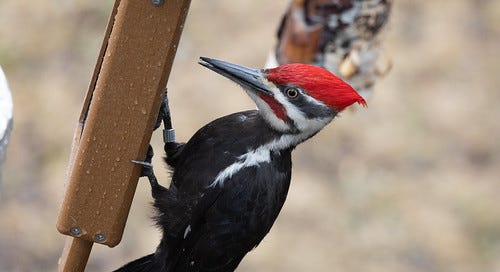



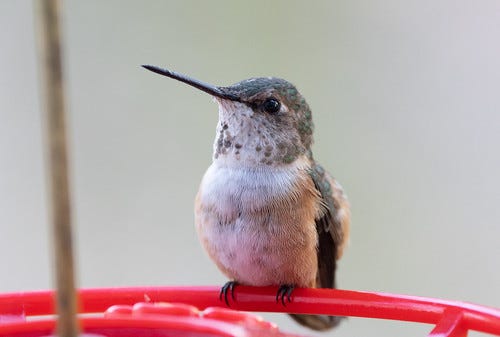

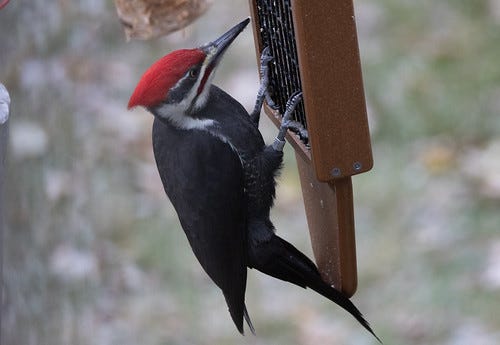

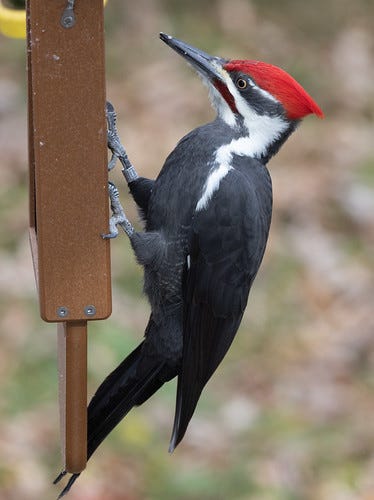
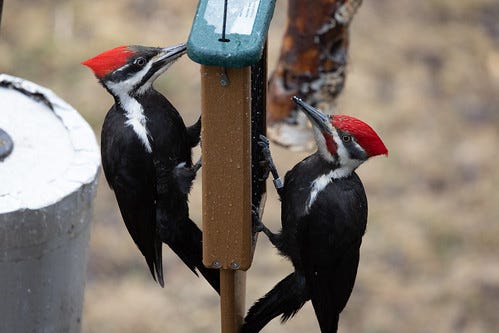
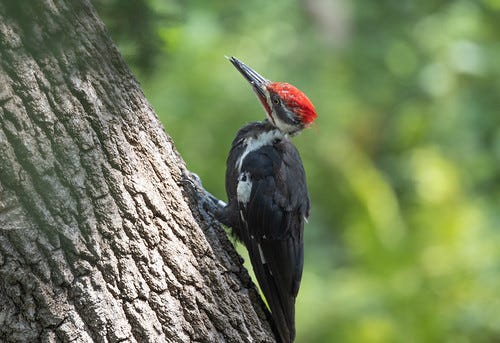
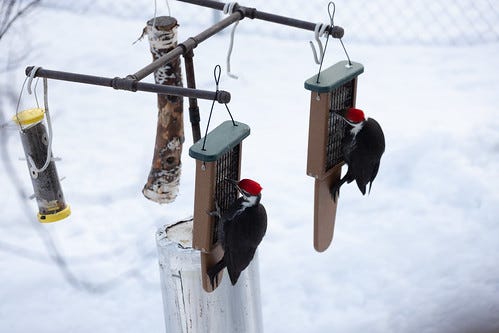
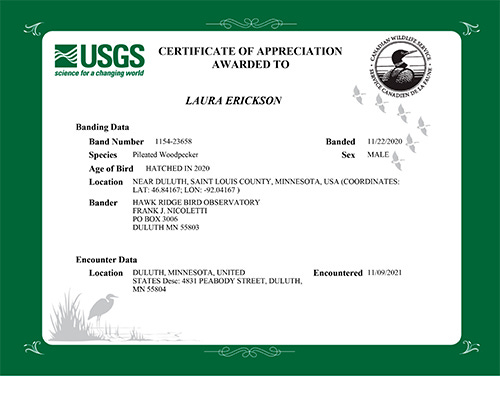
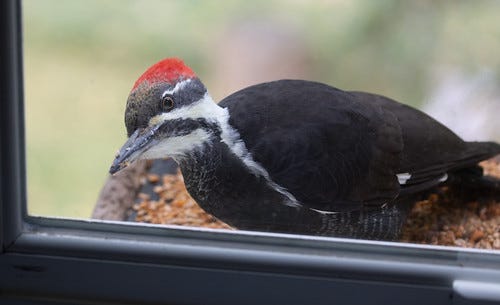
Regarding the timing of pair bonding between pileated woodpeckers I have a record in my notebook of them actually mating on 13 March. That was in 2021 in NW Wisconsin. They did it on top of the bluebird house situated in the middle of our lawn, which was dramatic, to say the least! The bluebirds had yet to return, which was probably just as well. I know it's just one data point but it does indicate that these things can happen surprisingly early in the season.
Enjoying your articles as always, thanks, and good luck with the new format.
As you know, I have a special feeling for the pileated woodpecker too - loved reading this story!